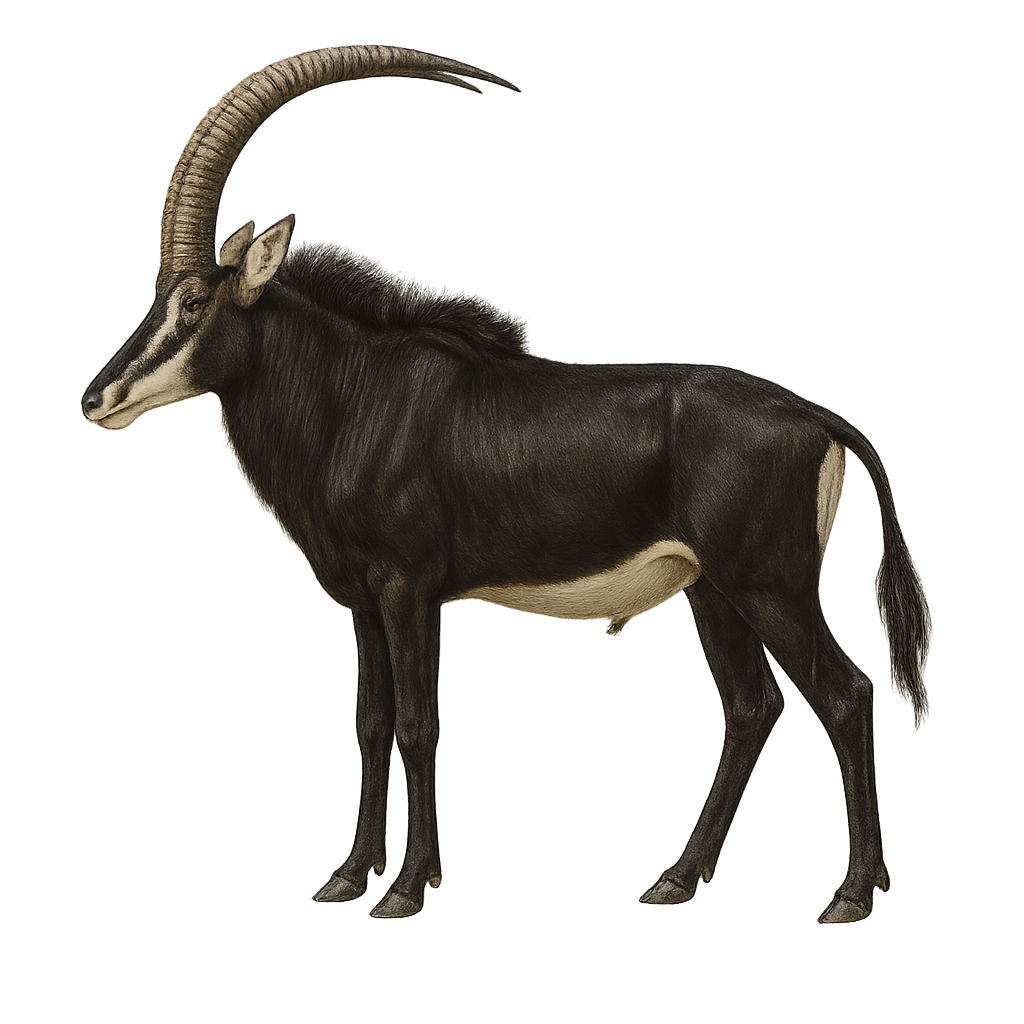Your wildlife photography guide.
Explore the sable antelope in detail, study its behavior, prepare your shots.
Where to observe and photograph the sable antelope in the wild
Learn where and when to spot the sable antelope in the wild, how to identify the species based on distinctive features, and what natural environments it inhabits. The WildlifePhotographer app offers tailored photography tips that reflect the sable antelope’s behavior, helping you capture better wildlife images. Explore the full species profile for key information including description, habitat, active periods, and approach techniques.
Sable antelope
Scientific name: Hippotragus niger

IUCN Status: Least concern
Family: BOVIDAE
Group: Mammals
Sensitivity to human approach: Suspicious
Minimum approach distance: 30 m
Rut period: May to July
Gestation: 270-280 jours
Births: February to March
Habitat:
Wooded savannas, open grasslands, light forests
Activity period :
Primarily active during the day, with peak activity in the morning and late afternoon.
Identification and description:
The sable antelope, or Hippotragus niger, is a majestic African herbivore, recognizable by its black coat in adult males and dark brown in females and juveniles. Both sexes have long, backward-curving horns. These animals live in herds, often led by a dominant female, and are primarily found in wooded savannas and open grasslands. Their diet mainly consists of grasses and foliage. Males are territorial and can be aggressive during the rutting season. The sable antelope is an iconic species of African wildlife, admired for its beauty and grace.
Recommended lens:
400 mm – adjust based on distance, desired framing (portrait or habitat), and approach conditions.
Photography tips:
To photograph the sable antelope, choose the golden hours of the morning or afternoon to benefit from soft light that will highlight the texture of its coat. Use a telephoto lens of at least 400 mm to capture details while maintaining a respectful distance. Be patient and discreet to avoid disturbing the herd. A tripod can be useful for stabilizing your camera during extended shoots.
The WildlifePhotographer App is coming soon!
Be the first to explore the best nature spots, track rutting seasons, log your observations, and observe more wildlife.
Already 1 430 wildlife lovers subscribed worldwide

